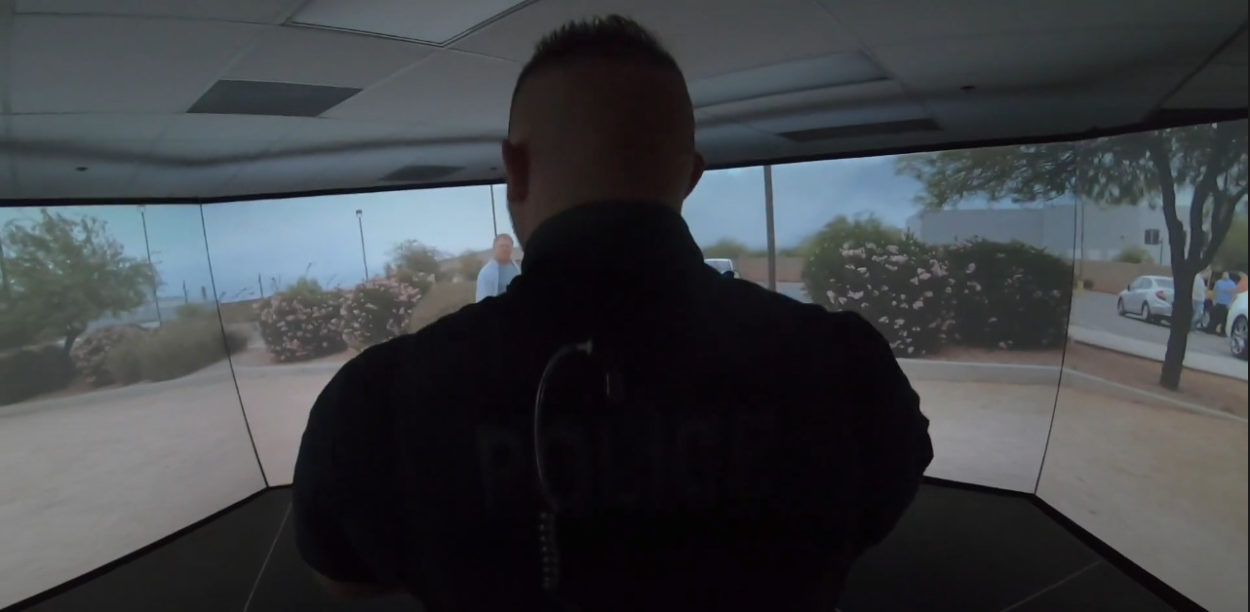
In 2015 a Georgia deputy shot and killed an unarmed, mentally unstable man just outside of the local grocery store. The man had been singing scripture inside the store and then telling employees that they were fired and to turn in their keys. After store employees called 911, the off-duty deputy responded to the call and encountered the man in his vehicle. The man ignored the deputy and walked toward him, singing just as he did in the store. The officer unsuccessfully deployed his electronic control device, which angered the subject. He then cocked his fist and charged the officer.
20 minutes after the shooting, the veteran officer of 13 years turned to a fellow officer and said “You know the bad thing about it…? I could’ve fought him.” Not only could he have used defense tactics on this man, but he could have also attempted to de-escalate the situation. But that never occurred to this officer. That may be due to the fact that in his more than 600 hours of ongoing training, he didn’t have a single hour of de-escalation training.
Look at your training records. Go ahead, take a look. Out of all the hours that are being spent on training, how many of them are on use of force? How many of them involve an officer using an electronic control device or a firearm? How about O.C. or some type of defensive tactics? Now look at how much time is spent on communication. Specifically, de-escalation communication. Now, I’m not here to say how many hours of de-escalation training you should see, but there should be quite a few. Why? Because the number one thing that officers do is talk to people. We talk to people a lot more than we use force. And we have the ability to talk some people out of situations where force might otherwise be necessary.
As a law enforcement trainer, and a content creator at VirTra, I know how important it is that we equip our officers with every tool they may need out there. Not training officers in de-escalation is no longer an option. Thankfully, VirTra has you covered!
Our training simulator is not just designed for use of force encounters. It is also an amazing resource for de-escalation training. Currently, there are over 50 scenarios that can be used for training officers in de-escalation.
For example, the scenario “Homeless Contact at Business” can be used for a variety of training events. The training officer can choose how the suspect reacts based on the verbalization techniques of the officer. While the homeless subject can become extremely agitated because he is being kicked out of his “home,” the officer can de-escalate the situation by offering assistance or by having the business manager give the man some time to pack up and leave the area. In just this one scenario, there are multiple options in ways that the man can be de-escalated from an upset state of mind. Conversely, the man can also become more upset if the officer doesn’t adjust their communication.
The great part about using a VirTra simulator for this type of training is that you don’t have to dedicate large amounts of time to get high-quality training. There’s virtually no setup time, no need for actors or complex scripts. VirTra does the heavy lifting for you! These scenarios are perfect for officers to do right after roll-call. They could go through up to 5 scenarios in just 15 minutes before they hit the road. This type of short, yet frequent training is a great way to ingrain these principles.
As trainers, we have the responsibility of putting tools onto our officers “tool belts.” When we train firearms, electronic control devices, O.C. and defensive tactics, each one of those ends up on their tool belts. Officers will only use the tools that were taught to them effectively and frequently. When we fail to properly train them, they will be forced to choose from the tools available. And, much like woodworking, it never turns out good if you don’t have the right tools for the job.
Train hard! Stay safe!
Recently Published
Join Our Newsletter







